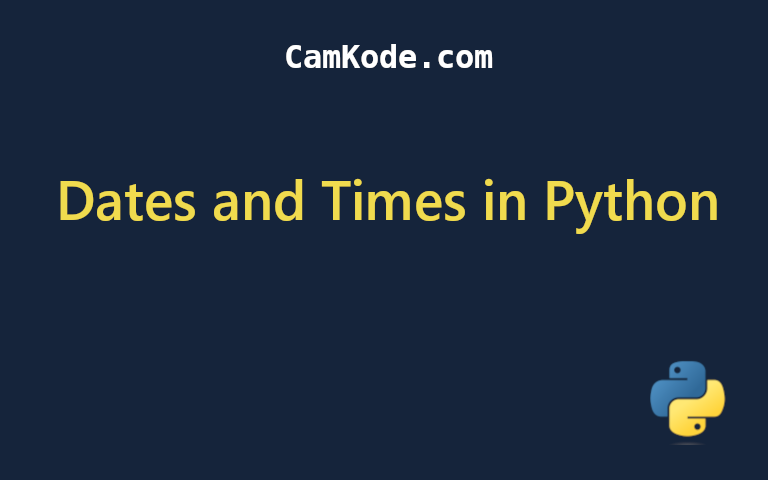How to Work with Dates and Times in Python
Posted by Kosal

Working with dates and times in Python can be accomplished using the datetime module, which provides classes for manipulating dates and times. Here's a basic guide on how to work with dates and times in Python:
-
Import the
datetimemodule:import datetime -
Creating a Date or Time:
You can create date, time, or datetime objects using the
date,time, anddatetimeclasses respectively.# Create a date object date_object = datetime.date(2024, 3, 13) # Create a time object time_object = datetime.time(14, 30, 0) # Create a datetime object datetime_object = datetime.datetime(2024, 3, 13, 14, 30, 0) -
Getting the Current Date and Time:
You can get the current date and time using
datetime.now()method.current_datetime = datetime.datetime.now() -
Formatting Dates and Times:
You can format dates and times into strings using the
strftime()method.formatted_date = date_object.strftime("%Y-%m-%d") formatted_time = time_object.strftime("%H:%M:%S") formatted_datetime = datetime_object.strftime("%Y-%m-%d %H:%M:%S") -
Parsing Dates and Times:
You can parse strings into date, time, or datetime objects using the
strptime()method.parsed_date = datetime.datetime.strptime("2024-03-13", "%Y-%m-%d") -
Manipulating Dates and Times:
You can perform arithmetic operations on dates and times using timedelta objects.
# Add 1 day to a date new_date = date_object + datetime.timedelta(days=1) # Subtract 1 hour from a datetime new_datetime = datetime_object - datetime.timedelta(hours=1) -
Comparing Dates and Times:
You can compare dates and times using comparison operators (
<,>,==, etc.).if date_object1 > date_object2: print("Date 1 is later than Date 2")
These are the basic operations you can perform with dates and times in Python using the datetime module. Depending on your specific needs, you may need to explore additional functionality provided by this module or other related libraries like dateutil or arrow.